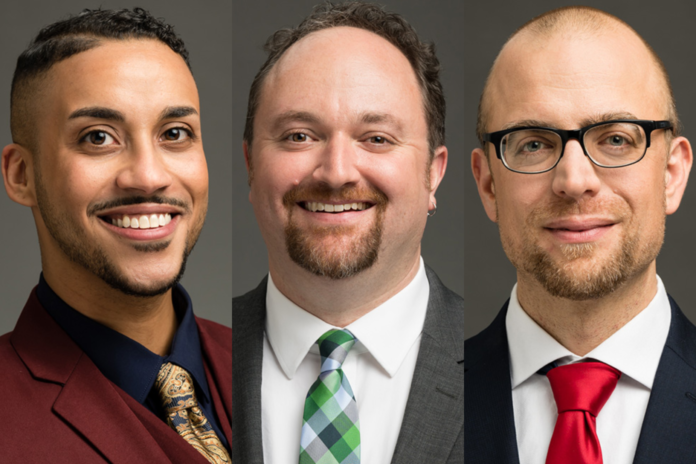
Minneapolis City Council members officially introduced a draft amendment to the city charter that would create a new Department of Public Safety and eliminate the Minneapolis police force as its own department.
After giving a notice of intent to change the charter’s current mandate — which requires funds for the MPD as a sole entity — to fund more general “public safety services,” City Council Members Phillipe Cunningham, Steve Fletcher, and Jeremy Schroeder introduced the draft of the amendment Friday. Their objective is to put the amendment up for a public vote during the next municipal election.
In June, the City Council drafted a similar amendment to the charter that would have removed the charter’s funding requirements for the MPD. The council intended for this amendment to appear on the ballot in November 2020, but it was voted down by the City Charter Commission, which wanted additional time to review the proposal.
The amendment introduced Friday rewrites the public safety section of the Minneapolis City Charter to incorporate an overarching Department of Public Safety that would supervise law enforcement officers.
The MPD would no longer be its own department, but one of many “additional divisions” of a new Department of Public Safety. Names or functions of other divisions are not specified in the draft.
According to the draft, a “division of law enforcement services, composed of licensed peace officers” would be “subject to the supervision of the department of public safety.”
The “additional divisions” would “provide for a comprehensive approach to public safety beyond law enforcement.”
Along with the draft of the ordinance, a four-page Racial Equity Impact Analysis document explains the council members’ goal in relation to minorities in Minneapolis.
One question in the analysis asks how “constituents from BIPOC communities currently relate to the desired outcome compared to white constituents.” Cunningham, Fletcher, and Schroeder provide a detailed response, explaining that 45% of violent crime in the past three years happened in “majority BIPOC or racially pluralistic” communities.
“This translates to a concentration of individual, family, and community trauma that is then transmitted intergenerationally and most often intra-communally through this exposure to violence,” the members write.
“Our current system of public safety that centers [around] the institution of policing not only fails to keep BIPOC communities safe, but it has actively caused harm disproportionately in those same communities.”
This amendment helps achieve the city’s racial equity goal, the analysis reads, by using “community members who are credible with offenders and community organizations providing social services.”
Cunningham, Fletcher, and Schroeder claim this approach will “result in better outcomes for BIPOC residents across several quality-of-life indicators.”
The Racial Equity Analysis also declares that Minneapolis’s current public safety structure has “actually decreased safety overall in our city.”
The ordinance, if passed by the City Council, will be voted on by the public as part of the Nov. 2, 2021 municipal election.
















